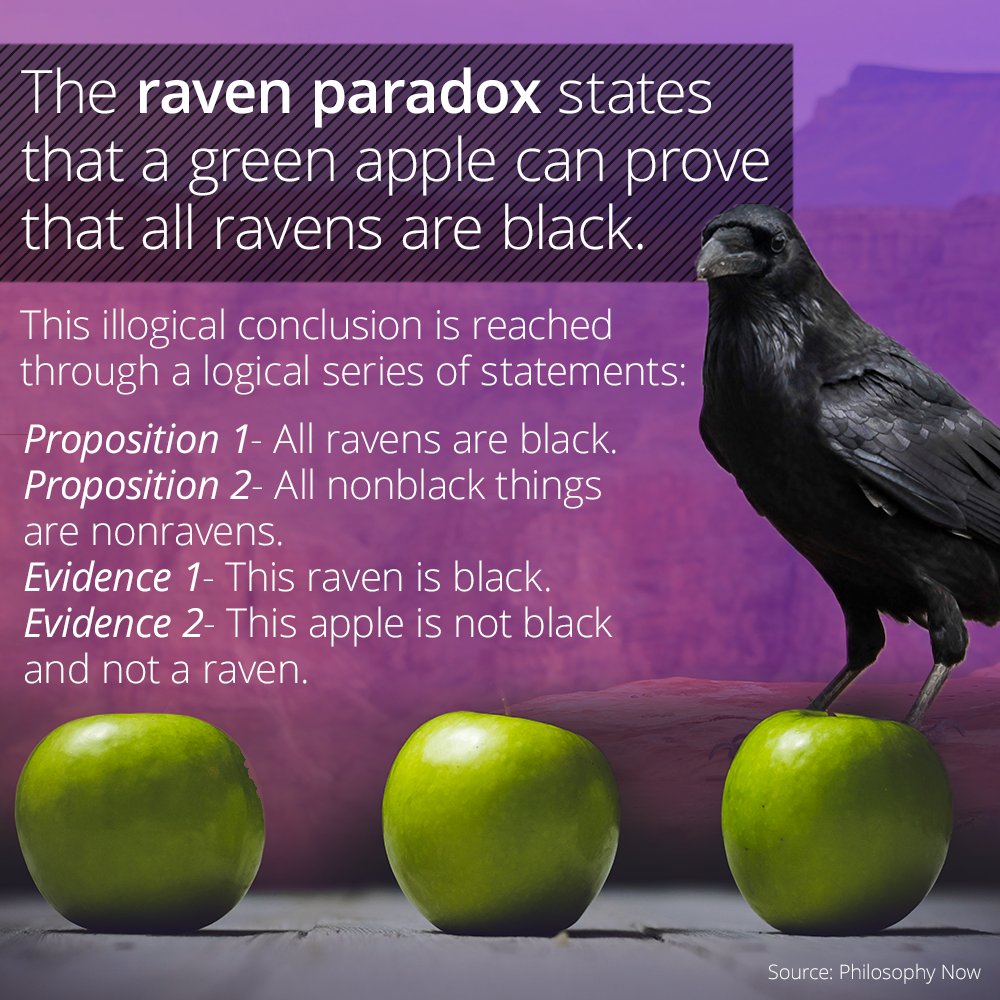

The Paradox of the Raven
The Paradox of the Raven, also known as Hempel's Paradox, is a logical paradox that challenges our intuitive understanding of confirmation and induction. It was formulated by the philosopher Carl Hempel in the mid-20th century and revolves around the question of how observing instances of a particular property in a specific domain can confirm or disconfirm a universal statement about that property.
The paradox can be stated as follows: If we accept the universal statement "All ravens are black," then observing a black raven confirms this statement. However, according to the paradox, observing a non-black object that is not a raven (e.g., a green apple) should also confirm the statement, since it is a case where the property of being non-black is not found in a raven. This seems counterintuitive, as we usually expect observations to confirm statements only when they match the specific conditions stated in the statement.
To better understand this paradox, let's break it down into two logical principles involved: Confirmation and Falsification.
1. Confirmation: According to the principle of confirmation, evidence that supports a hypothesis should increase our confidence in that hypothesis. In the case of the statement "All ravens are black," observing a black raven indeed confirms this statement. Each black raven we observe provides evidence in favor of the hypothesis.
2. Falsification: The principle of falsification states that a single counterexample can disprove a universal statement. In the case of the statement "All ravens are black," observing a non-black object that is not a raven, such as a green apple, provides a counterexample. If we find a single non-black non-raven, it contradicts the universal statement and falsifies it.
The paradox arises from the fact that both confirmation and falsification seem to be at work simultaneously. Observing a black raven confirms the statement, while observing a non-black non-raven also seems to confirm it. This is puzzling because we usually expect evidence to be more meaningful when it directly matches the conditions stated in the hypothesis.
One way to resolve this paradox is to consider the logical structure of the universal statement. The statement "All ravens are black" can be reformulated as "All non-black things are non-ravens." In this reformulation, observing a non-black non-raven (e.g., a green apple) does indeed confirm the statement, as it matches the conditions stated.
The paradox shows that confirmation is a complex process and cannot be solely determined by individual observations. It highlights the importance of considering the logical structure and alternative formulations of statements when evaluating evidence.
References:
1. Hempel, C. G. (1945). Studies in the Logic of Confirmation. Mind, 54(213), 1-26.
2. Salmon, W. C. (1967). Confirmation and Relevance. In The Philosophy of Science (pp. 269-297). Cambridge University Press.
Related Posts
© 2025 Invastor. All Rights Reserved

User Comments